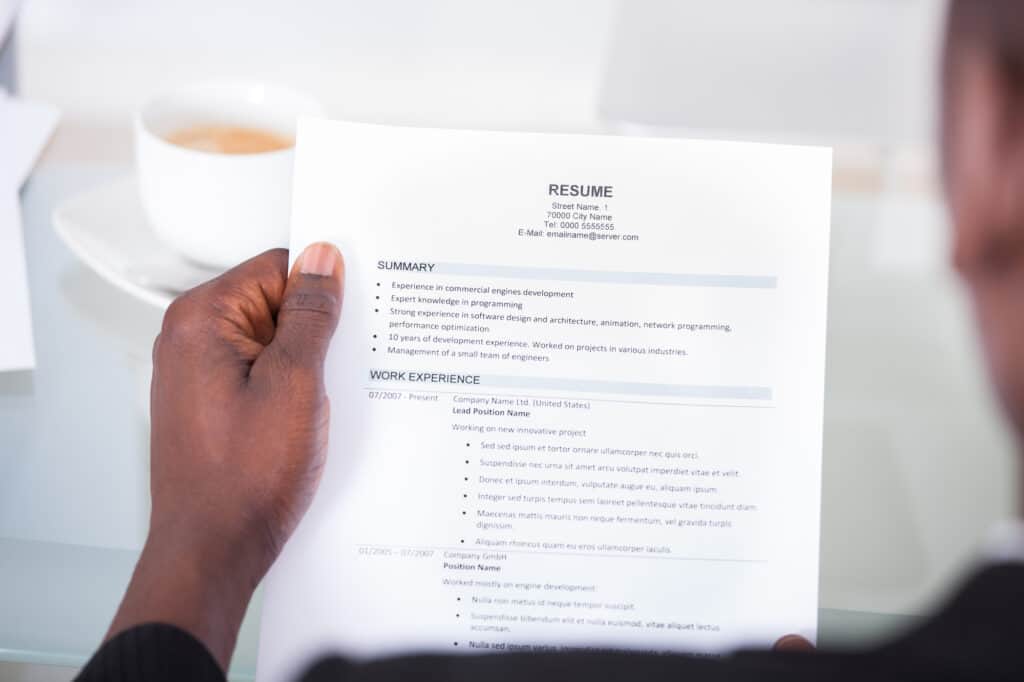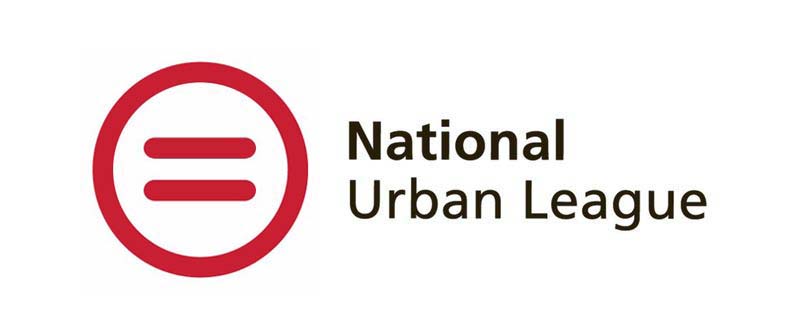If you’ve ever applied for a job or internship, you were probably asked for a copy of your resume as either part of the application or during your interview. And while you may have one, have you ever asked yourself, “What is a resume, anyway?”
In addition to being an indispensable part of your job search, your resume functions as a historical document about your career. It can remind you where you’ve been, where you’re going, and help define your professional brand.
What Is a Resume?
So, what is a resume, exactly?
A resume is the brief history of your professional achievements, kind of like the inside flap of a book cover. Reading your resume gives the recruiter or hiring manager your basic stats, such as where you’ve worked and where you went to school, but it also tells them what you’ve already accomplished. This, in turn, should give the reader an idea of what you could achieve if they hire you.
What you’ve done and what you’re going to do are a big part of your professional brand. You might be known for being an Excel wizard who creates VLOOKUPS with ease. Or maybe you’re the kind of account manager who saves important clients from leaving the company. Whatever it is, if it’s included in your resume, it helps explain who you are on the job.
>>MORE: Learn how to use the STAR method to make your resume shine.
Why Do I Need a Resume?
Everyone who wants to apply for a new job needs a resume. One big exception is people pursuing an academic career. If that’s you, you’ll use a curriculum vitae (CV) instead of a resume.
And why do you need a resume? For starters, nearly every kind of job asks for a resume. This is often true even when you have to fill out a separate application or when you’re applying electronically, like through an applicant tracking system (ATS).
While you could whip up one on the fly, having a resume ready to go makes the application process so much easier. You won’t have to try and remember what you did where or when you worked at this company or that.

Building Your Personal Brand
Learn how to build and maintain your professional brand in this free course from Ashurst UK. You'll discover why job seekers need a brand and how to make the most of yours.
Avg. Time: 2-3 hours
Skills you’ll build: Personal brand, brand management, LinkedIn profile, reputation
What Are the Main Resume Types?
While there are many types of resumes, most people choose a chronological, functional, or combination resume. Each has pros and cons to consider.
Chronological Resume
The most commonly used resume is chronological. It presents your work history in reverse chronological order. Your current or most recent job is first, below that is the next most recent job, and so on until you reach the beginning of your work history (or all the work history you want to include). Each job includes details of your accomplishments in the role.
The main advantage of a chronological resume is that it’s familiar, meaning hiring managers and recruiters “get” chronological resumes. They know exactly where to look to find the information they want to quickly evaluate whether or not they should consider you for the role.
>>Related: Resume Keywords: What They Are and How to Use Them
But a drawback of chronological resumes is that they draw attention to gaps in your work history. While there are many valid reasons for stepping back from paid work, some employers consider this a red flag.
Functional Resume
A functional resume spotlights your experience and skills, instead of your chronological work history. It starts with skills groupings (like “communication” or “analytical”), then moves to your employment history, education, and other credentials.
The pro of a functional resume is that it focuses on your abilities, not how long you’ve worked. However, a functional resume may be a red flag for a recruiter for exactly this reason.
Even if resume gaps aren’t a red flag, recruiters often have a hard time finding what they want on a functional resumes. It’s not always obvious where to look for what information. And it’s not as easy for them to connect your skills to a particular job or company.
Hybrid or Combination Resume
A hybrid or combination resume combines a chronological and functional resume into one.
Hybrid resumes start with a summary of your qualifications — a brief overview of your top or most relevant skills. Under that is a “skills” or “relevant skills” section where you list the hard and soft skills you possess that are most relevant to the role.
The next section is a reverse chronological summary of your work history. But unlike a chronological resume, you only include the top three or four accomplishments from that role. Then you add the rest of your relevant information, like degrees or certifications.
The advantage of a hybrid or combination resume is that it focuses on your skills without calling as much attention to your chronological work history. And because it’s similar to a chronological resume, it’s easier for someone to look at a specific spot and find what they’re looking for.
As disadvantages go, they are similar to those of a chronological resume. If you have gaps in your work history, they’re more obvious.

Career Readiness
Get prepped and ready for your career in this free course from Cisco. Enhance skills like project management, data analysis, and communication.
Avg. Time: 2-3 hours
Skills you’ll build: Project management, data analysis, communication, project planning
How Many Pages Should a Resume Be?
A resume is an overview of your strengths and abilities, so it should be concise and focused on your top skills. That means the ideal resume length is brief —preferably no longer than two pages. You can use your cover letter and interview to talk about things that aren’t on your resume.
If you have a limited work history, a one-page resume is perfectly fine. Including internships, volunteer experience, or virtual job simulations will help demonstrate you’ve got the skills and abilities the employer is looking for.
How Often Should I Update a Resume?
The best time to update your resume is after a significant event. It will be easier to remember the critical details when that event is fresh in your mind. But it’s also a good idea to review and update your resume every six to 12 months.
While your updates should include any new employment information (like a new job title or moving to a new employer), it can also include things like:
- Significant wins in your current job (you landed a big account)
- Volunteering
- Certificates
- New contact information
- Finishing a degree or enrolling in school
What to Include in a Resume
When you’re early in your professional journey, you may wonder what to put on a resume. Even later in your career, you may want to include as much information as possible to ensure the person reviewing your resume sees you as the top candidate.
>>MORE: Read more about the tricks to writing a stand out resume.
Below are the sections to include on your resume. While some of these are expected, others are completely optional, so don’t feel you need to include everything on your resume.
Contact Information
The very top of your resume is your contact information. This includes:
- Your name
- Email address
- Phone number
And that’s about it, with a few caveats.
Use a personal email address, not a school-issued one, especially if you’re close to graduating. You never know when you might lose access to it, and you don’t want to have to tell the company mid-application you’ve got new contact information.
The phone number on your resume will likely be your cell phone. That’s great, because some employers contact applicants via text, but not all do. If you’re in the habit of not answering unknown numbers (we get it!), make sure your voicemail is set up and includes your name so the employer knows they got the right person.
You can also include a link to your LinkedIn profile and, if you have one, a link to your personal website or online portfolio (or both!).
And you don’t need a street address. A U.S. city and state or even just the state is acceptable.
Summary of Qualifications
The summary section is likely the first thing the hiring manager will zero in on when reviewing your resume. It should include your top skills and accomplishments that are relevant to the job.
Unlike other parts of your resume, this section is in paragraph form, consisting of no more than four to five sentences. Using a “block” format helps save valuable real estate on the page. However, this format is harder to skim, so use short sentences that emphasize your skills.

Professional Skills
Identify your professional values in this free course from Discover Financial Services. You'll learn how to identify what matters to you and how to connect with a company that supports it.
Avg. Time: 2-3 hours
Skills you’ll build: Discovery, planning, self-reflection, organization
Work Experience
Where and how you include the work experience section of your resume depends on the type of resume you use, but list your accomplishments as bullet points. This makes it easier to skim your resume and connect your skills with a specific company and role.
Education
Below any paid work experience, add a section for your education. This is for formal education, like attending college.
Start with the name of the school or schools you graduated from and the dates you were there, then add your degree and major or area of concentration. If you haven’t graduated yet, mention the type of degree you’re working toward, along with your major and an expected degree date.
If you left school before completing your degree, you can still include the information on your resume. State the name of the school and the dates you attended. However, instead of including degree information, you can either leave that information off or mention just the major.
Internships
The next section is for internship information. It’s structured similarly to the work experience section. List the name of the company and the dates you interned. You can include a title if you wish.
This section can come after paid work experience and before the education section if you prefer.
Volunteer Experience
If you have relevant experience, you can include a volunteer section. It’s formatted like the work experience section, but it needs to be clear that you were a volunteer, not an intern or that this was a paid job.
Certificates
If you have relevant certificates, this is the section for them. State the name of the course or program you completed and the date the certificate was issued.
For example, if you complete a Forage virtual job simulation, including it on your resume demonstrates to employers that you understand the job and have a completed project to prove it.
>>MORE: Here’s how to include your Forage virtual job simulation on your resume.
Write Your Resume
Your resume helps a hiring manager quickly determine if you might be a good fit for the role and if they should schedule you for an interview. But creating a stand-out resume doesn’t come naturally to everyone. So, consider taking Forage’s Resume Writing Masterclass.
You’ll learn how to turn your tasks and duties into quantifiable and measurable results, the best way to incorporate keywords from the job posting on your resume, and how to craft a summary section that explains why you’re the best person for the job.
Image credit: AndreyPopov / Depositphotos.com


